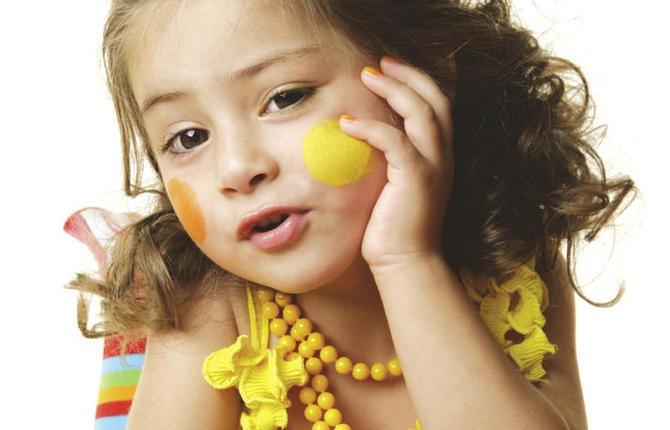
The ugly side of the beauty business
My two daughters – aged five and 10 – routinely return home from birthday parties with goodie bags stuffed to the brim with lip-gloss, nail polish, body glitter and “perfume”. Putting aside for the moment my concerns that they’re being groomed – so to speak – for a lifetime of high-maintenance good looks, a glance at the ingredients in these products makes me blanche.
It reads like a rap sheet for toxic criminals.
Lest you think I’m over-reacting, consider this: Tweens spend $500 million a year on beauty products, according to New York Magazine. Yet many of these products are chock-full of chemicals we don’t want anywhere near our daughters.
Phthalates, for example, are commonly used in fragrances, hair products and lotions. They appear under such chemical code names as diethyl phthalate (DEP), dimethyl phthalate (DMP) and dibutyl phthalate (DBP). Not only are these chemicals barely pronounceable, phthalates (pronounced thay-lates) are a family of endocrine-disrupting chemicals that mess with hormones and can be toxic to reproduction in both men and women. They have also been implicated in liver, kidney and lung damage.
Look also for parabens, widely used as preservatives in moisturizers, shampoos and conditioners, skin creams, even baby lotions and other infant products. They have been found in samples of breast tumors – they mimic estrogen. They’re listed on ingredients lists as methylparaben, ethylparaben, butylparaben and propylparaben.
Sodium Lauryl Sulfate (SLS) or Sodium Laureth Sulfate (SLFS) is commonly seen on ingredients lists of shampoos and body care products, even toothpastes. Yet both substances have been shown to cause carcinogenic nitrates, and are skin and eye irritants, potentially causing improper eye development in children.
Petrolatum is banned for use cosmetics in the European Union due to its link with cancer and other health problems. In North America, however, it’s still widely used in many personal care products.
FD&C colours are also widely spotted on ingredients lists and are made from coal tar. Again, the EU has banned this suspected carcinogen but we can still find it in shampoos and cosmetics.
And those are just the usual suspects.
Most of us are shocked to discover that 89 percent of ingredients in personal care products have never been tested – and certainly have never been tested in combination with the other ingredients in which they’re formulated. So while we think that someone out there is protecting us – and certainly our children – from toxic chemicals, the truth is no-one’s minding the store. The onus is on us to ensure that our kids aren’t smearing toxins onto their skin and hair – all in the name of beauty.
And speaking of which, why are our children – our girls – being targeted as young as seven and eight by marketers out to convince them that being female means lotions and potions designed to make us look and smell…different? It’s time we moms and dads stand up for little girls that look like…well, little girls, not Lolitas-in-training.
While we’re at it, let’s send a message to those companies whose shampoos and soaps are nothing more than a toxic soup: It’s time to clean up your act!
To find out more about what’s in your kids’ personal care products, log on to the Environmental Working Group’s database at www.cosmeticsdatabase.org. Key in the products and get a “report card” detailing areas of concern and giving a green, caution or red light.
• Leslie Garrett is a mother of three, award-winning journalist and author of The Virtuous Consumer: Your Essential Shopping Guide for a Better, Kinder, Healthier World (and one our kids will thank us for!). Visit her at www.virtuousconsumer.com.






